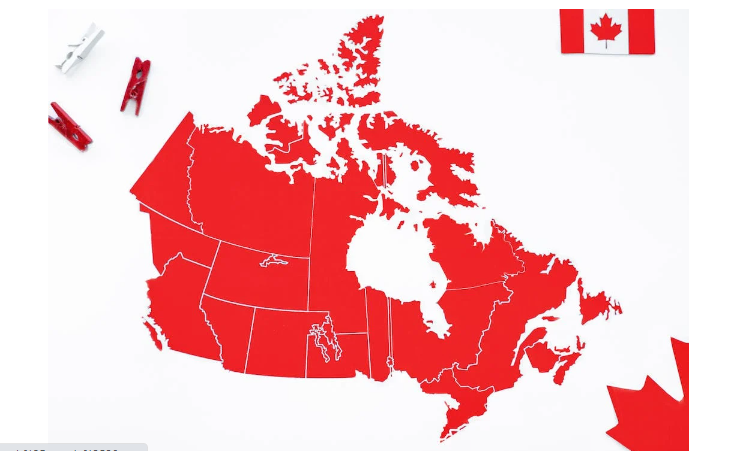A Brief History of Early Childhood Education in Canada
Abstract:
Early childhood education and child care in Canada has a rich and complex history that spans over a century. This paper aims to provide an overview of the major developments in the history of early childhood education and child care in Canada, from the early 1900s to the present day. The paper begins with an exploration of the early roots of child care and education in Canada, highlighting the importance of the mother-child relationship in traditional Indigenous cultures. It then traces the history of child care and education in Canada through the establishment of the first kindergarten, the emergence of daycare centers and nursery schools, the role of government policy and funding, and the ongoing efforts to improve the quality and accessibility of early childhood education and child care.
Introduction:
Early childhood education and child care in Canada has a complex and evolving history that has been shaped by a range of cultural, social, economic, and political factors. Historically, child care and education were largely the responsibility of families and communities, with mothers playing a central role in caring for young children. However, over the course of the 20th century, the provision of child care and early childhood education has become increasingly formalized and professionalized. Today, early childhood education and child care are recognized as vital components of Canada’s social infrastructure, with efforts to expand access and improve quality continuing to be a priority for policymakers and educators alike.
Early Roots of Child Care and Education in Canada:
The early roots of child care and education in Canada can be traced back to the traditional Indigenous cultures of the First Nations, Inuit, and Métis peoples. In these cultures, the mother-child relationship was central to the care and education of young children. Children were viewed as a gift from the Creator and were considered to be an important part of the community. Mothers were responsible for caring for young children and were supported by other members of the community. In addition, grandparents and extended family members played an important role in providing guidance and support to young children.
The First Kindergarten in Canada:
The formal provision of early childhood education in Canada began with the establishment of the first kindergarten in 1882 in Ontario. The kindergarten was a response to the growing demand for education and care for young children, and was based on the educational philosophy of Friedrich Fröbel. Fröbel believed that young children learn best through play, and his approach emphasized the importance of providing children with a safe and nurturing environment in which to explore, learn, and grow.
Daycare Centers and Nursery Schools:
The establishment of daycare centers and nursery schools in Canada followed the establishment of the first kindergarten. The first daycare center in Canada was established in 1909 in Montreal, and was designed to provide care for children while their mothers worked outside the home. Nursery schools emerged as a response to the growing demand for education and care for children under the age of five. These schools were typically run by women’s organizations and provided a range of educational and social experiences for young children.
The Role of Government Policy and Funding:
The provision of child care and early childhood education in Canada has been shaped by a range of government policies and funding initiatives. In the 1960s and 1970s, the Canadian government introduced a series of policies aimed at expanding access to child care and early childhood education. These policies included the creation of the Canadian Council on Children and Youth, the establishment of the Canada Assistance Plan, and the introduction of tax incentives for families with young children. In addition, the federal government provided funding to provinces and territories to support the development of early childhood education and child care programs.
The Emergence of Early Childhood Education as a Profession:
The 1980s and 1990s saw the emergence of early childhood education as a recognized profession in Canada. This period was marked by the development of early childhood education programs at post-secondary institutions
The Child Care Crisis of the 1990s:
The 1990s was marked by what is often referred to as the child care crisis in Canada. This period was characterized by a shortage of affordable and high-quality child care, which put a significant strain on families and hindered women’s participation in the workforce. In response, the federal government introduced a range of policies and funding initiatives aimed at expanding access to child care and early childhood education. These policies included the creation of the National Child Benefit, the establishment of the Child Care Transition Fund, and the introduction of the Universal Child Care Benefit.
The 2000s: Expanding Access and Quality:
The 2000s saw continued efforts to expand access to child care and early childhood education in Canada. In 2005, the federal government introduced the Multilateral Framework on Early Learning and Child Care, which provided funding to provinces and territories to support the development of high-quality, affordable child care and early childhood education programs. In addition, the government introduced the Child Care Expense Deduction, which provided tax relief for families with children in child care.
The 2010s: The Emergence of the Early Learning and Child Care Framework:
The 2010s saw the emergence of the Early Learning and Child Care Framework, which represented a significant shift in the federal government’s approach to early childhood education and child care. The framework was designed to promote the development of high-quality, affordable child care and early childhood education programs across Canada. It included a range of policy initiatives, such as the creation of the Canada Child Benefit and the establishment of the Early Learning and Child Care Innovation Program. The framework also provided funding to provinces and territories to support the development of early childhood education and child care programs.
The Role of Provincial and Territorial Governments:
While the federal government played a significant role in shaping the landscape of early childhood education and child care in Canada during the period from 1990 to 2020, the role of provincial and territorial governments was also crucial. Provincial and territorial governments were responsible for the delivery of child care and early childhood education programs, and played a key role in the development of policy and funding initiatives aimed at expanding access, affordability, and quality. In addition, many provinces and territories established early childhood education and care systems that were unique to their local context and needs.
Challenges and Ongoing Efforts:
Despite the significant progress that was made in expanding access to high-quality, affordable child care and early childhood education in Canada during the period from 1990 to 2020, a number of challenges remained. These included ongoing issues related to affordability, accessibility, and quality, as well as a lack of coherence and coordination across different levels of government. In recent years, there have been ongoing efforts to address these challenges, including the development of a national early learning and child care system, the implementation of the Canada-wide Early Learning and Child Care Agreement, and ongoing investments in early childhood education and care.
Photo by Anna Nekrashevich from Pexels: https://www.pexels.com/photo/red-and-white-map-in-close-up-shot-7144745/





